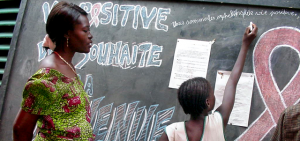A GUEST POST BY STEPHENIE FOSTER
On January 1, 2011, the new UN Entity for Gender Equality and the Empowerment of Women (UN Women) officially opened its doors. UN Women brings together the work of four previously distinct UN entities which focused on gender equality and women’s empowerment: the Division for the Advancement of Women (DAW); the International Research and Training Institute for the Advancement of Women (INSTRAW); the Office of the Special Adviser on Gender Issues and Advancement of Women (OSAGI); and the best known of the four, the United Nations Development Fund for Women (UNIFEM). The goal of the UN Women is to merge this critical work and elevate its stature in the UN structure. Importantly, the new head of UN Women, former Chilean President Michelle Bachelet, has the rank of Under Secretary-General of the UN, underscoring this entity's institutional importance.
brings together the work of four previously distinct UN entities which focused on gender equality and women’s empowerment: the Division for the Advancement of Women (DAW); the International Research and Training Institute for the Advancement of Women (INSTRAW); the Office of the Special Adviser on Gender Issues and Advancement of Women (OSAGI); and the best known of the four, the United Nations Development Fund for Women (UNIFEM). The goal of the UN Women is to merge this critical work and elevate its stature in the UN structure. Importantly, the new head of UN Women, former Chilean President Michelle Bachelet, has the rank of Under Secretary-General of the UN, underscoring this entity's institutional importance.
When I taught a class on Women & the UN last fall at American University in Washington, DC, I started the class by asking the students their initial impression of the UN. Their responses were predictable: large, bureaucratic, slow moving, known for peacekeeping, the Security Council and helping refugees. The students didn’t have that much of a sense of all of the work done at the UN on issues facing women and girls. When they class was over, they still held many of their initial impressions, but also were excited about the possibility that UN Women could integrate the work being done globally in the areas of fighting violence against women; increasing political participation, ensuring economic empowerment and fighting for security and human rights.
As UN Women opens its doors, we need to ensure that it is well funded and well staffed, and that it can indeed fulfil its lofty and critical mission. But, UN Women can’t do it alone. There are multiple interconnected entities in the UN system that do work that impacts women and girls. UN Women must be able to help ensure that the work is done in a way that takes into account the needs and challenges women and girls face, and that we put the resources of the UN to bear in solving these major global challenges.
